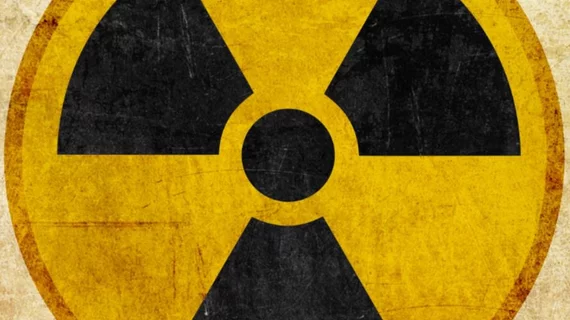Breast shape can shift by 4mm during radiation therapy
Partial breast irradiation, though an attractive alternative to whole-breast radiotherapy, is prone to movement changes of around 4 millimeters during imaging, according to research out of the Netherlands Cancer Institute in Amsterdam. That finding suggests physicians might want to take extra steps to ensure image quality and avoid unnecessary radiation.
As medicine turns toward conformal techniques for managing breast cancer radiation therapy, corresponding author Tanja Alderliesten, PhD, and colleagues wrote in Physics and Imaging in Radiation Oncology, motion management is becoming more key to treatment. It’s especially critical in cases where radiation is targeted to a tumor site rather than the whole breast, the authors said—a practice that’s becoming increasingly common.
While radiation therapy after breast-conserving surgery typically involves whole breast irradiation with an added boost to the original tumor site, recent research has suggested women can likely avoid exposing such a large area to radiation, Alderliesten et al. wrote. Because up to 80 percent of local recurrences of breast cancer detected post-surgery are at or near the original tumor site, select low-risk patients can forgo whole-breast therapy altogether.
Partial breast irradiation focusing on the tumor site and nothing else is on the rise as a result, the authors said, but defining sites, shapes and volumes of patients’ breasts and tumor sites has proved a challenge.
“Accurate delineation of the original tumor position poses a major challenge,” Alderliesten and co-authors wrote. “Even when clips are implanted during surgery, variability in delineated volume is substantial.”
But those delineations, though studied in other cancer cases, haven’t been well-documented for breast cancer, they said.
Alderliesten and her team studied images of 17 patients undergoing radiation therapy after breast-conserving surgery to expand current knowledge of the topic, according to the study. The researchers evaluated both planning computed tomography and follow-up cone-beam computed tomography scans for 71 fractions total, transferring those images into 3D data and comparing any shape changes.
Breast shape variability differed between different locations, the authors reported, but changes of around 4 millimeters were frequent and appeared around 30 percent of the time. Larger shifts were more apparent in larger breasts and those with seromas.
“Breast shape changes are frequently observed during radiation therapy, especially for larger breasts,” Alderliesten et al. said. “This should be taken into account in the development of planning and setup verification protocols concerning partial breast irradiation and the delivery of breast boost treatment in whole breast irradiation.”

